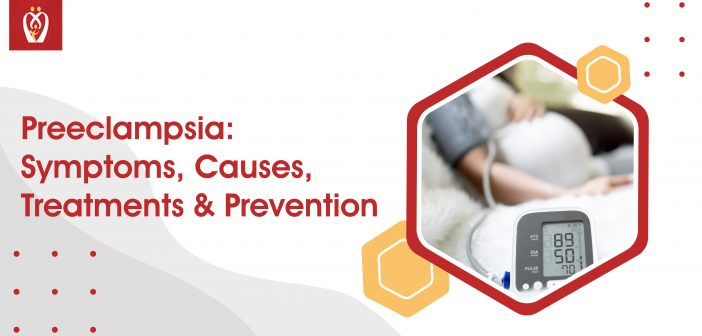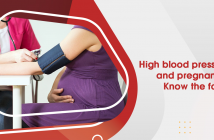Preeclampsia is a critical medical condition that can develop around the middle of pregnancy (after 20 weeks). High blood pressure, protein in the urine, swelling, headaches, and blurred vision are all symptoms of preeclampsia. A healthcare provider is required to treat this condition. You can immediately book an appointment with your GP with the Nurturey pregnancy app. Usually, it goes away once your baby is born.
About the Nurturey Pregnancy App
Nurture’s PinkBook is a “digital substitute” to the NHS’s Red Book. Pregnant women and parents can use the PinkBook to access their child’s health records, see upcoming health checkups, and get trusted information directly from the NHS about their stage in the parenting or pregnancy journey. If you have pregnancy concerns, you can use the Nurturey pregnancy app to book an appointment instantly with your GP/midwife. You can also make appointments, reorder prescriptions, and message your doctor.
Symptoms
What happens to your body when you have preeclampsia? | Pregnancy
When you have preeclampsia, your blood pressure rises (higher than 140/90 mmHg), and you may have high protein levels in your urine. Preeclampsia stresses your heart and other organs, which can cause serious complications. It can also affect the blood supply to your placenta, cause fluid to build up in your lungs, or impair liver and kidney function. Kidney failure indicates the presence of protein in your urine.

Who is at risk for preeclampsia?
First-time mothers may be more prone to preeclampsia. General practitioners are not quite sure why some people develop preeclampsia. However, the following factors may put your pregnancy at a higher risk include:
- Having a history of high blood pressure, kidney disease, or diabetes
- Expecting multiples
- Family history of preeclampsia
- Autoimmune conditions like lupus
- Obesity
What are the symptoms of preeclampsia?
Many people who have preeclampsia have no symptoms. However, some of the first signs of preeclampsia are high blood pressure, protein in the urine, and retaining water (this can cause swelling and weight gain).
Other preeclampsia symptoms include:
- Headaches
- Blurry vision or light sensitivity
- Dark spots appear in your vision
- Right side abdominal pain
- Swelling in your hands and face (edema)
- Shortness of breath
One must inform their healthcare provider about all of your pregnancy symptoms. Many people have no understanding they have preeclampsia until they get their blood pressure and urine checked at a prenatal appointment.
Symptoms of severe preeclampsia may include:
- Hypertensive emergency (where the blood pressure can rise to 160/110 mmHg or higher)
- Decreased kidney or liver function
- Fluid in the lungs
- Low blood platelet levels (thrombocytopenia)
- Decreased urine production
You may need to admit yourself to the hospital for closer monitoring or may have to deliver your baby immediately if your preeclampsia is severe. Your GP may prescribe medication to manage high blood pressure or help your baby’s lungs grow before delivery.
Causes
What causes preeclampsia?
No one knows for sure. Experts believe preeclampsia happens because of an issue caused by the placenta’s health (the organ that develops in the uterus during pregnancy). It is responsible for providing oxygen and nutrients to the fetus. Preeclampsia reduces the blood flow to the placenta, which can cause complications for you and the fetus.
When does preeclampsia begin during pregnancy?
Preeclampsia usually occurs after 20 weeks of pregnancy. However, it can hit sooner. Preeclampsia is most common when a woman is pregnant or close to becoming pregnant (37 weeks gestation). Preeclampsia can also occur after delivery (postpartum preeclampsia) within the first few days of delivery. It can start weeks after delivery in some uncommon circumstances.
Will preeclampsia affect my baby?
Preeclampsia can result in premature birth (your baby needing to be delivered early). Premature babies are more likely to develop health complications such as low birth weight and respiratory problems.
Treatments
How is preeclampsia treated?
Your GP/midwife will advise you on the best way to treat preeclampsia. The severity of your preeclampsia and how far along you are in your pregnancy will determine how you will get treated.
If you’re close to full term (37 weeks or more), your baby will likely be born early. You can still have a vaginal birth, although a Cesarean section (C-section) is advisable. Your healthcare practitioner may prescribe medicine to help develop your baby’s lungs and control your blood pressure until the baby is ready to be delivered. It is sometimes preferable to have early delivery rather than risking a prolonged pregnancy.
When preeclampsia strikes early in pregnancy, you’ll be under continuous monitoring to prolong the pregnancy and allow the fetus to thrive and grow. Prenatal appointments, ultrasounds, urine tests, and blood draws will increase. You may have to take your blood pressure at home. You may need to stay in the hospital until your baby is born if you have severe preeclampsia.
Preeclampsia patients are generally given magnesium intravenously (directly into the vein) during labor and after delivery to prevent the development of eclampsia (seizures from preeclampsia).
Is there a treatment for preeclampsia?
There is no treatment for preeclampsia. The only cure for preeclampsia is by giving birth. Your healthcare provider will monitor you for several weeks after delivery to ensure your symptoms resolve.
Prevention
How can I lower my chances of getting preeclampsia?
There are some steps that people with risk factors can take before and during pregnancy to reduce their chances of getting preeclampsia. Among these steps are:
- Losing weight if you are overweight or obese (before pregnancy-related weight gain)
- Keeping your blood pressure and blood sugar under control (if you had high blood pressure or diabetes before pregnancy)
- Maintaining a consistent exercise routine
- Getting sufficient sleep
- Eating healthy, low-salt foods and avoiding caffeine
Is it possible to prevent preeclampsia?
Daily taking a baby aspirin reduces your risk of preeclampsia by 15%. If you have preeclampsia risk factors, your GP may refer you to start taking aspirin early in your pregnancy (by 12 weeks gestation).
When should I see my GP/midwife?
Preeclampsia is a potentially fatal pregnancy condition. If you are receiving treatment for this condition, ensure to keep all of your appointments and blood or urine tests. Contact your GP/midwife if you have any concerns or questions about your symptoms.
- Symptoms of a seizure-like twitching or convulsing
- Breathing difficulty
- Experiencing severe abdominal pain (specifically on the right side)
- Vision is hazy
- Severe headache
- Dark spots in your vision







